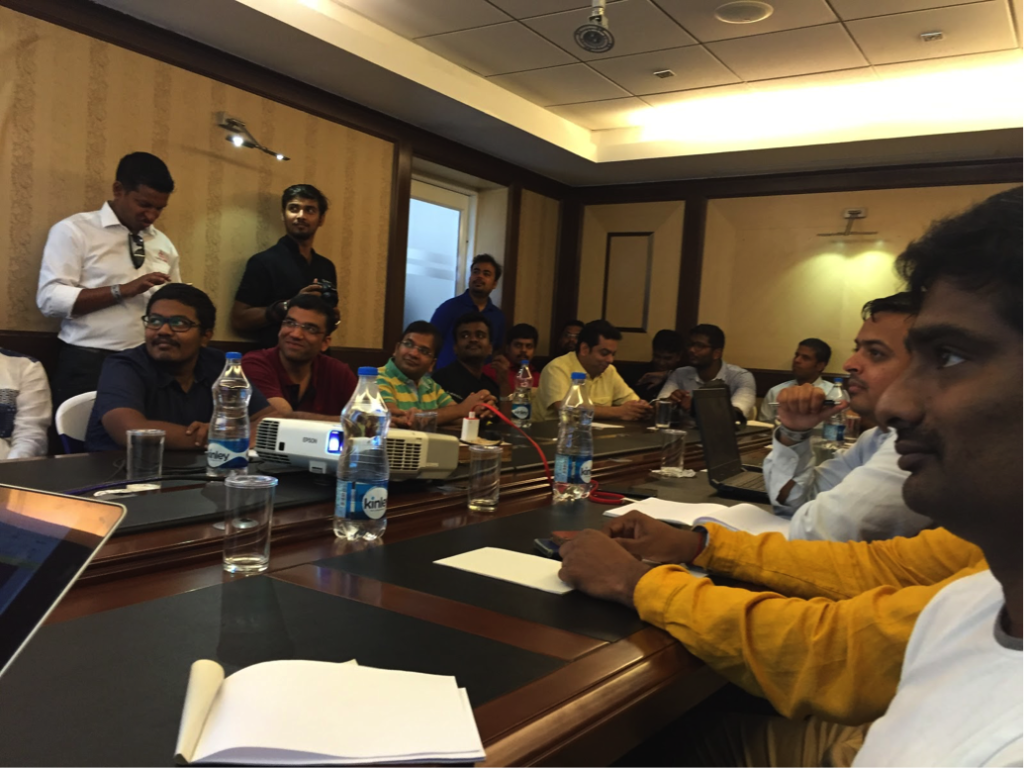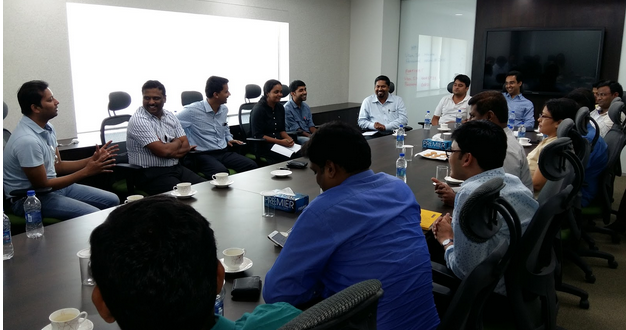Marketing for beginners
The morning of the SaaSx3, saw a round table by Pallav Nadhani, CEO of Fusion Charts.
And I was one of the few lucky people who managed to find a seat at this already cramped round table.

Pallav, kick-started the session with a question:
Who are you & what will the world miss if your company dies in 10 years?
The question (although slightly morbid) did its trick.
It gave us an idea of what we had in store for the rest of the RT and beautifully set the context for what we could expect. And what we had to do if we had to market a product.
Interspersed with quirky humour, anecdotes, and important questions to ponder, the session was definitely interesting and novel.
Here are some key takeaways:
Aligning Product with Marketing
We usually talk about our product, our goal as a company. But Pallav stressed on the importance of flipping the question and address the problems of the customer.
It’s only when marketing defines product, will the product shape into an answer for the customer’s problems. And you’ll be building something that customers will get value out of.
He asked us to put a “why” to the problem that we were trying to solve for our customers.
An example he cited from some big companies that asked this question:
“Why shouldn’t you have access to your files, whenever/wherever you want?” was Dropbox’s question before they started building their product. Similarly, ask yourself that “why” to the problem you’re trying to solve.
Quoting Simon Sinek’s TED Talk on the Golden circle, Pallav went on to discuss the important questions of the purpose, the process and the result
– Who to reach
– When to reach
– How to reach
Who to reach?
Identify the three personas you have to sell to: Influencer, buyer and user
Depending on the nature of your product, decide who has to be engaged to ensure you’re able to sell to them.
Figure out “Why” should that person use your product? Everybody has a different reason, but what’s that persona’s reason?
If you’re asking somebody to switch from an existing product to a new one, how seamless is migrating? If it’s a new product, how will you sell him the need?
Tip: Ensure you’re asking the same “why” as your customers. Pallav cited an example here. Every time there’s a new download, they send an email to the customer asking the purpose behind the download. This way, they made sure that they were delivering on what customers expect from them.
When to reach?
Collect as much information on your customer (in a non-stalky way, of course!). The information should include the information that they consume on a daily basis, and how do they consume it. And how do you make sure you are in those media, so as to make an impression?

A classic example of this that he quoted was the billboards. He asked us to recollect some of the latest billboards, and then tried to delve into the reason behind it. We discovered that we see the billboards that we choose to see. If you’re hungry, you remember a restaurant’s board, or a car if you’re looking to buy one etc.
Tip: Make sure you actively hit customers that are seeking for your product. Identify where your customers would be, and then hang around to make an impression.
How to reach?
We discussed various ways of doing the actual marketing here.
One of the classic marketing strategies is The Sniper Approach vs Carpet Bombing approach to marketing.
Swearing by the sniper approach to marketing, Pallav said that, rather than trying a wide casting net approach with different experiments, try a laser-focused activity with precision, to ensure you nail the sell!
And the only way to do this would be to, Know your user, see if you understand a DILO (Day In the Life Of) your customer (creepy, but highly insightful) and see how you can fit into the picture.
Also, can you partner with someone to push your product? Or can you poach any partners of your competitors?
Tip: Unless you discover who you are, and why you exist, nothing can help you explain it to your customers.
Here’s a quick summary of all the major points:
- Find that key problem that you’re trying to address and make it your goal.
- Identify your ideal user & study the various personas.
- Now ensure you “marry” the your goals to the user’s needs.
- Work towards creating an experience, so your prospects take action.
- Collect as much information as possible on your customer, so you know when and how to hit them with your product.
Happy Marketing!


